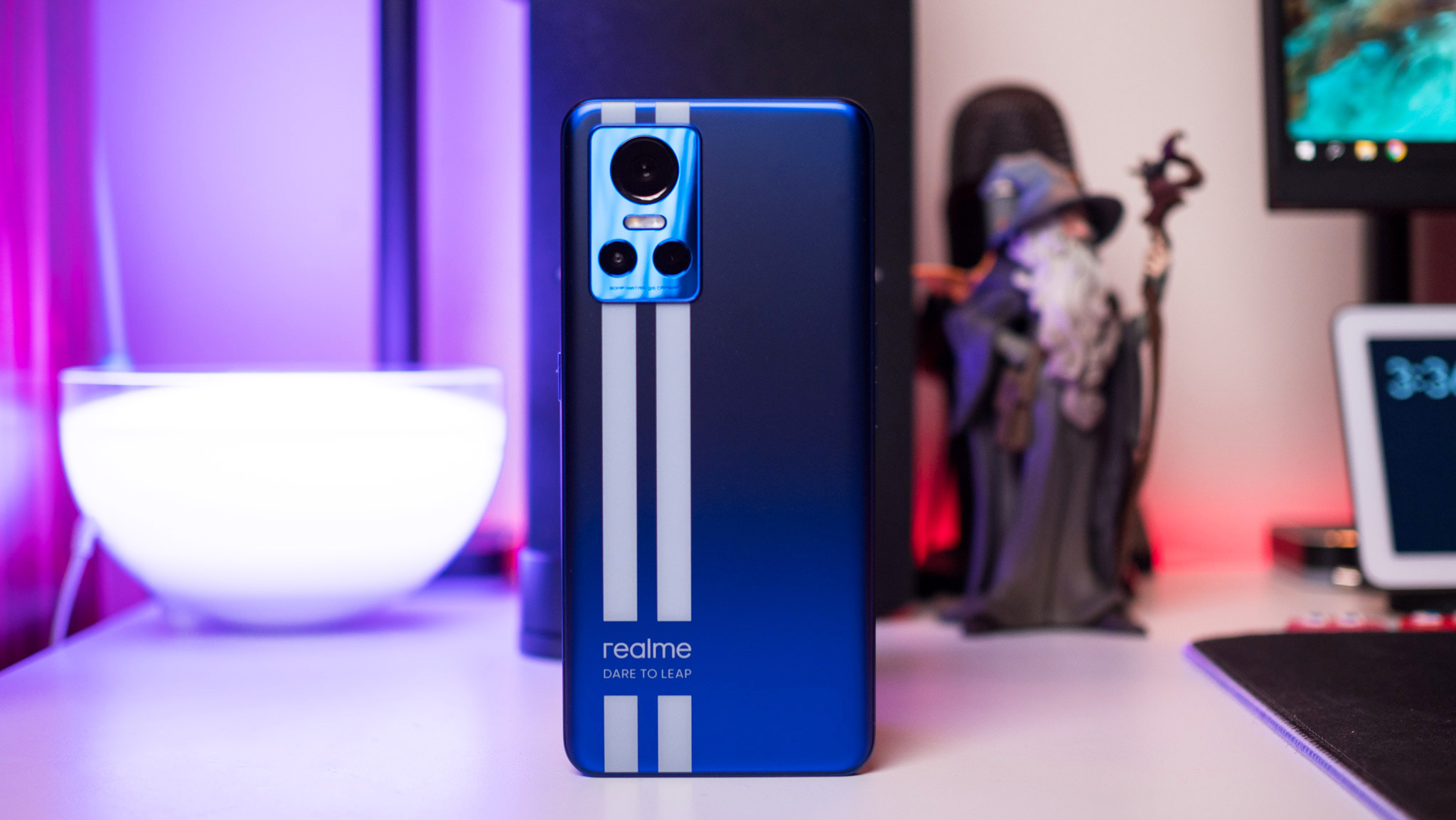Android Central Verdict
The GT Neo 3 brings 150W charging to the mid-range segment, with the device able to fully charge its 4500mAh battery in under 20 minutes. It also has powerful internal hardware that's ideal for gaming, and a smooth 120Hz AMOLED screen. However, you'll find a lot of bloatware out of the box, the auxiliary cameras aren't worth the bother, and the phone won't get as many software updates as its immediate rivals.
Pros
- +
Smooth 120Hz AMOLED screen
- +
Powerful hardware
- +
Great 50MP camera
- +
Stereo sound
- +
All-day battery with the fastest charging tech around
Cons
- -
Poor auxiliary cameras
- -
No IP68 rating
- -
No wireless charging
- -
Plenty of bloatware
- -
Will only get two platform updates
Why you can trust Android Central
Realme is known for launching a lot of phones, and that particular trait hasn't changed in 2022. The Chinese manufacturer is maintaining a frenetic pace in countries like India, where it is now in the third-largest phone brand with a 16% market share. Realme's launch strategy has allowed it to grow faster than Xiaomi and Samsung, and if it continues this momentum, it has a real chance of overtaking Samsung in the country this year.
While the brand has focused its attention on the budget category for most of its four-year journey, it is now turning to the mid-tier and premium segments to drive growth. The GT 2 Pro is a fantastic offering that holds its own against the best Android phones, but it's the GT Neo 3 that will see more attention in markets like India. The Neo 3 doesn't alter the formula too much for Realme, but its 150W tech is a differentiator, and it doesn't have any equal — at the moment.
Realme GT Neo 3: Price and availability

Realme unveiled the GT Neo 3 in China at the end of March, and the device made its global debut on April 29, starting in India. The phone is sold in two variants: the standard model has 80W fast charging, and then there's a 150W model that I'm using that costs a little more.
The 80W model is available in two storage options: the 8GB/128GB variant costs ₹36,999 ($478) and the 8GB/256GB version is sold for ₹38,999 ($503). The GT Neo 3 with 150W UltraDart fast charging is sold in a single 12GB/256GB configuration for ₹42,999 ($555).
Other than the fast charging tech, there's no difference between the 80W and 150W versions, and they're sold in the same three color options, including Nitro Blue, Black, and Sprint White.
Realme GT Neo 3: Design and screen
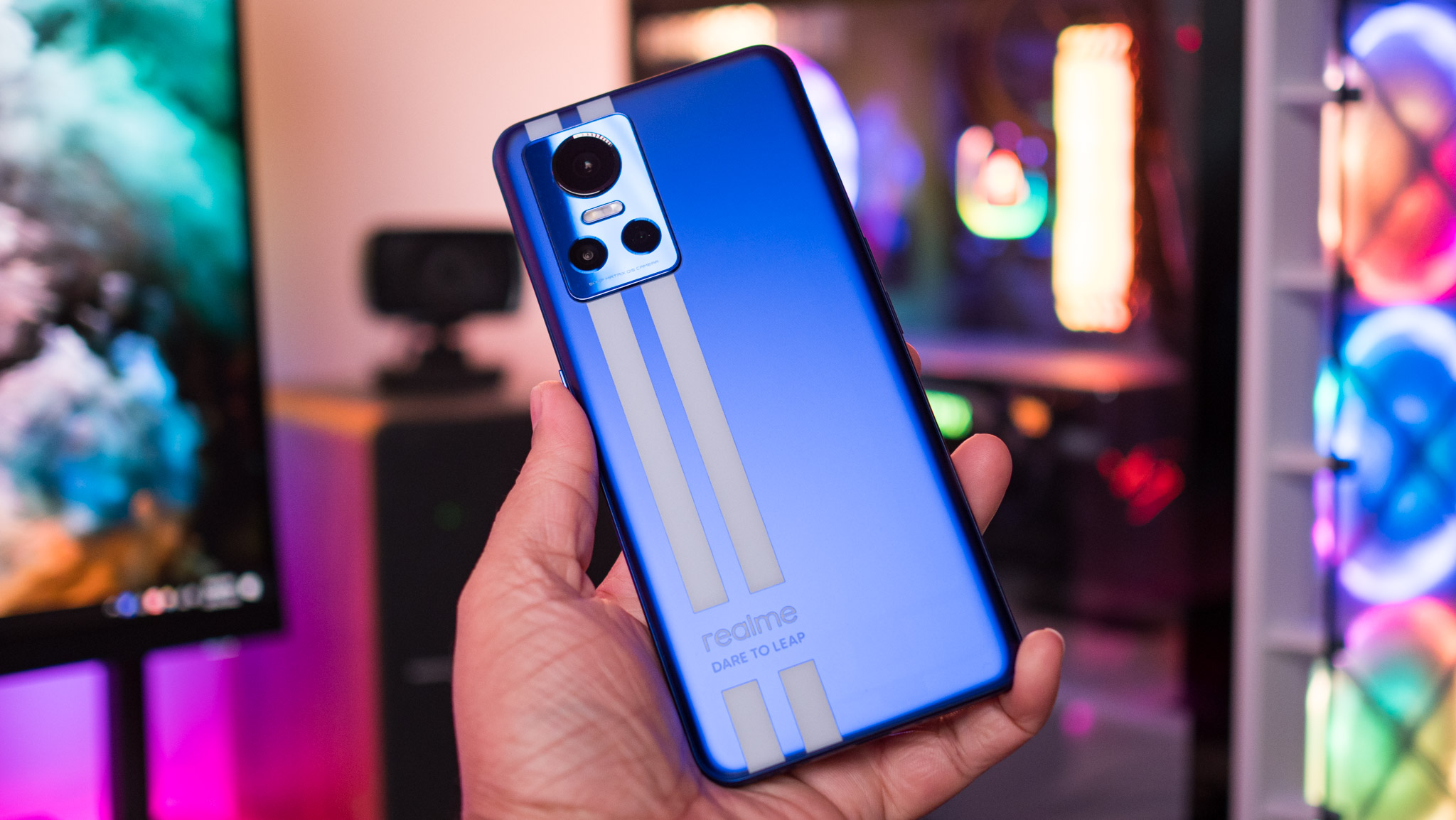
Realme is no stranger to rolling out phones with bold designs, and the GT Neo 3 follows in a similar vein. The Nitro Blue color variant in particular is striking thanks to the racing livery at the back, and the chunky camera housing looks good on the device.
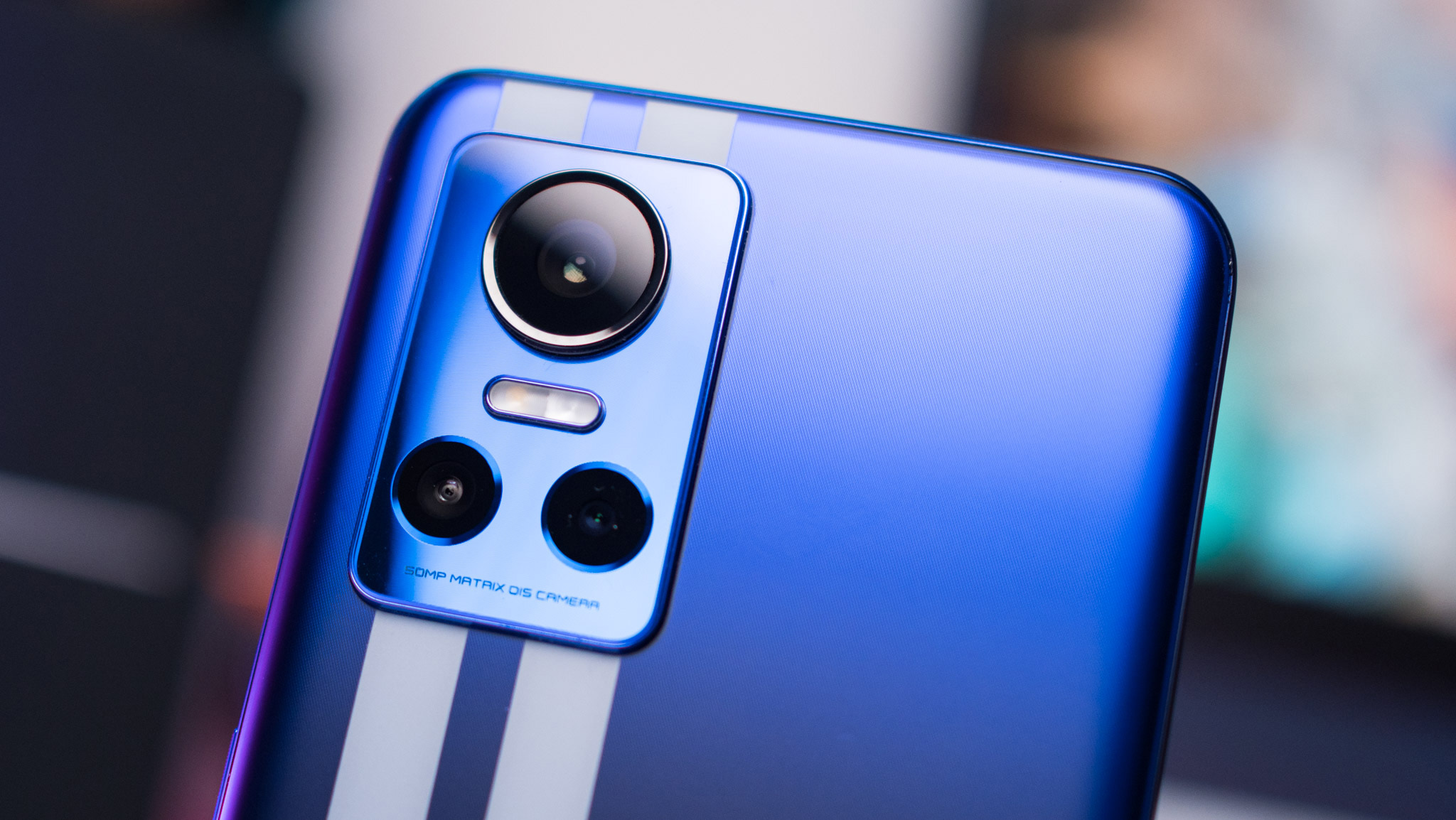
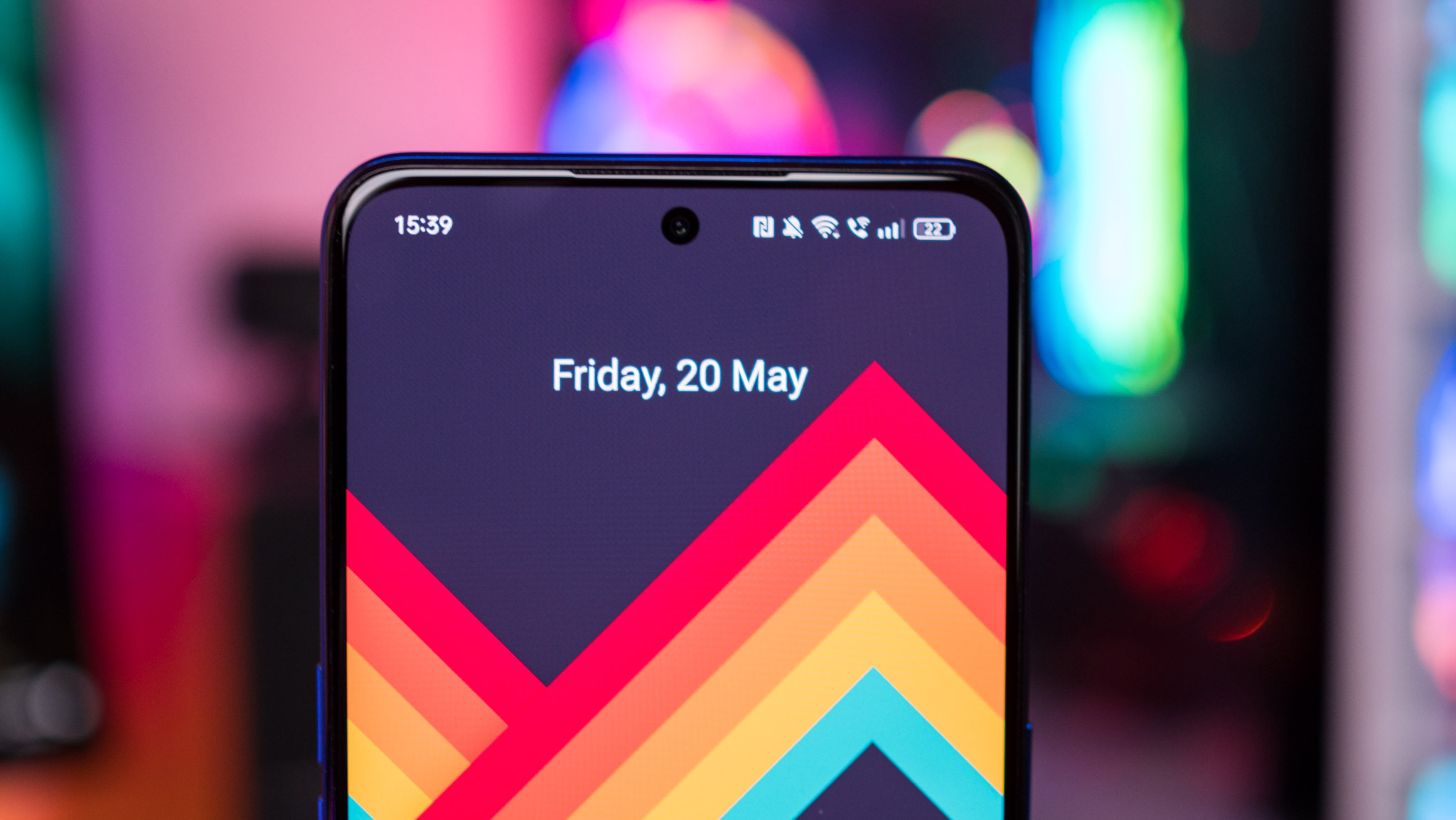


If you're not a fan of the flashy design, there's a black option that is much more muted. While the design looks good, Realme went with a polycarbonate mid-frame and glass back for the GT Neo 3.
Get the latest news from Android Central, your trusted companion in the world of Android
The back feels good in-hand, but considering the category this phone is targeting, Realme should have offered a metal mid-frame here. Nevertheless, the design contours around the edges and fits snugly in your hand, and it isn't unwieldy in daily use.

Coming to the screen, the GT Neo has a 6.7-inch 120Hz AMOLED panel that is on par with other devices in this category. You get vibrant colors and excellent contrast, and I didn't have any issues with brightness. There is a lot of customizability in Realme UI 3.0 for the screen, including the ability to adjust the color balance, set up always-on mode, and adjust font scaling.
The GT Neo 3 has stereo sound as well, and that makes a lot of difference when playing games or streaming video. It gets sufficiently loud that I didn't have any issues with it, and while you don't get identical channels, it is a good showing nonetheless.
Realme GT Neo 3: Performance
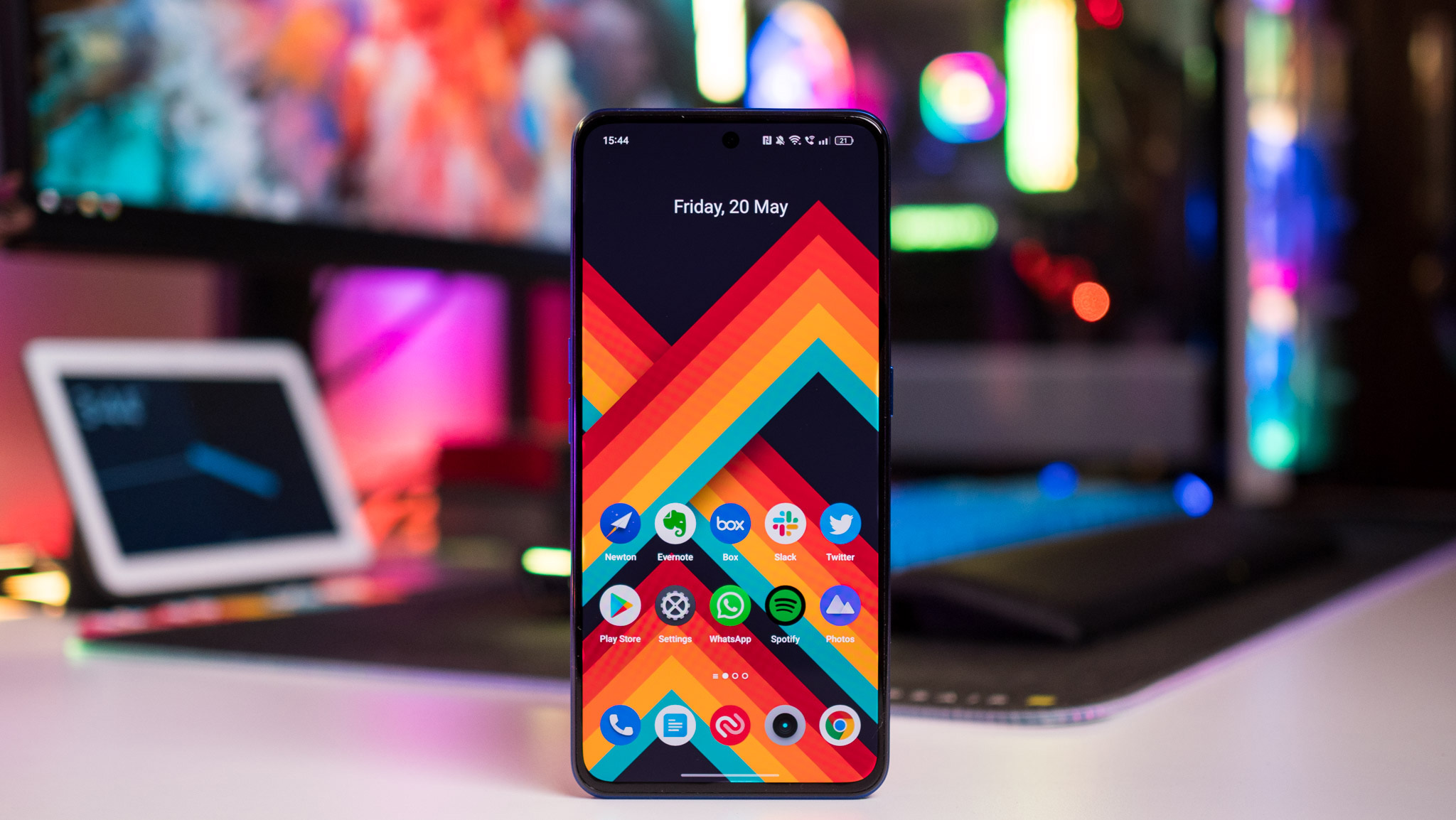
The GT Neo 3 is powered by MediaTek's latest Dimensity 8100 platform, a 5nm design that features four Cortex A78 cores that go up to 2.85GHz and four Cortex A55 cores that hit 2.0GHz. There's also a Mali-G610 with six shader cores, and overall, the hardware outmatches the Snapdragon 870 in most scenarios.
In day-to-day use, there are zero issues with the GT Neo 3. The phone handles intensive gaming and mundane tasks with ease, and I didn't notice the device overheating even while gaming. MediaTek is doing all the right things with its mid-tier designs of late, and the Dimensity 8100 is another reliable chipset that delivers standout performance without consuming too much power.
This is one of the fastest phones in the mid-range category.
Elsewhere, you get a vibration motor that provides great feedback, and this is an area where Chinese brands have fared much better over the last 12 months. The in-screen reader is also good, but it is positioned a little too low, so you have to maneuver your thumb awkwardly to unlock the phone. That said, the sensor is fast to authenticate and doesn't have any issues.
The phone has 5G connectivity as well, and you get a slate of bands: 1/3/5/8/28/40/41/77/78. Of course, the bands will change based on region, but the Indian model I'm using has the requisite bands for 5G once services go live in the country at some point. There's also Wi-Fi 6, Bluetooth 5.3, AptX HD, LDAC, and LHDC audio codecs.
Overall, the GT Neo 3 shines on the hardware front. The Dimensity 8100 is plenty powerful in this category, and it has a lot of headroom for the future.
Realme GT Neo 3: Battery
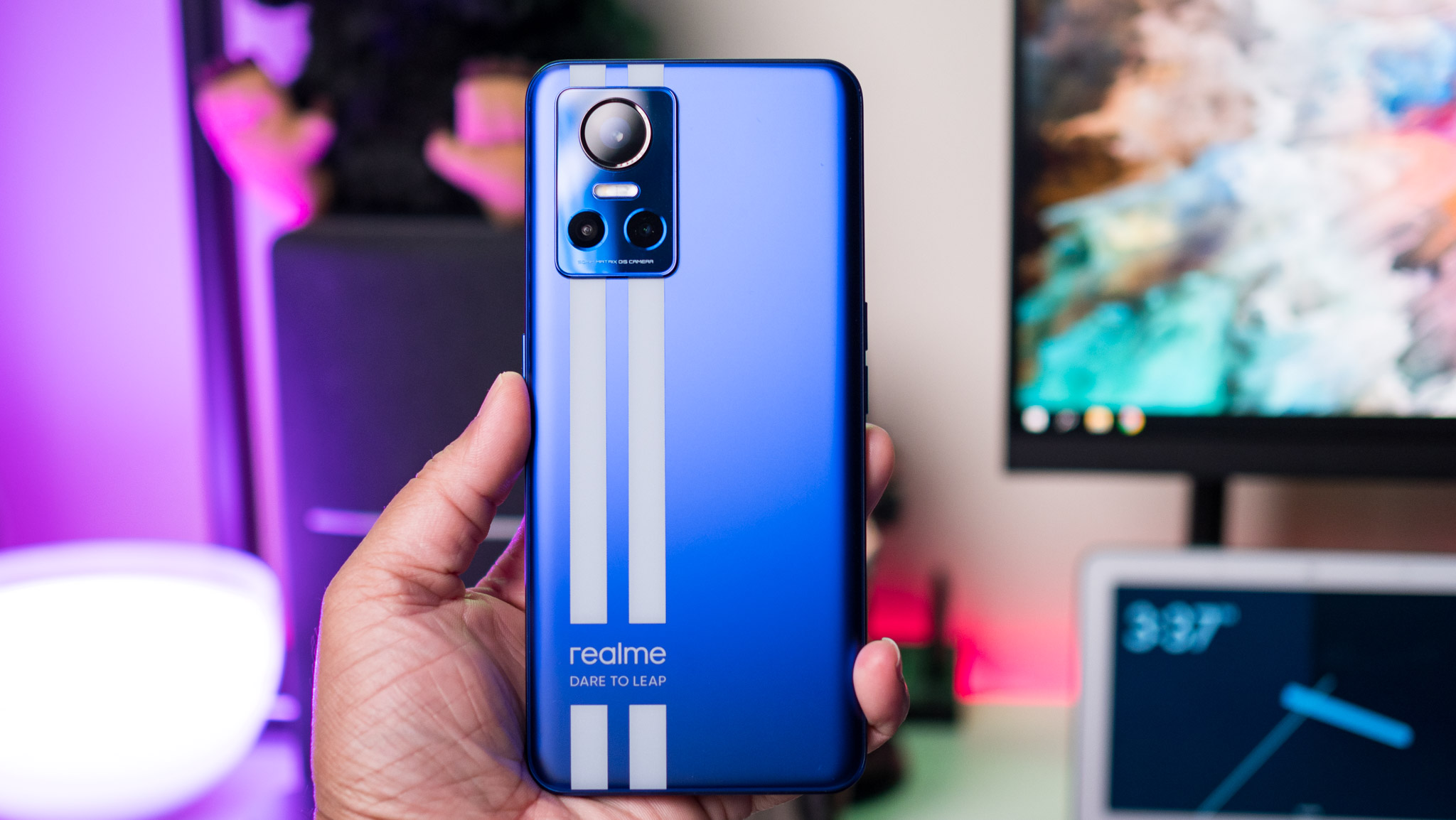
The marquee feature of the GT Neo 3 is the 150W UltraDart charging tech, currently the fastest in the world. The tech itself is identical to OPPO’s 150W SuperVOOC standard, and it is licensed by both OnePlus and Realme. Obviously, charging at 150W creates a lot of heat, so there are plenty of built-in safeguards to throttle the current if the device gets too hot.
Realme claims that a full charge takes just 17 minutes for the 4500mAh battery, with the phone able to go from flat to 50% in 5 minutes. That isn't the case in real-world use; my GT Neo 3 took just over 7 minutes to get to 50%, and a full charge was just shy of 16 minutes. Those figures are still higher than any other fast charging standard available today, but the downside is that the phone heats up considerably, going past the 40 degrees Celsius (104 Fahrenheit) mark.
150W makes a difference, but the downside is that it heats up the phone too much.
You can mitigate this by switching off the Turbo Charging feature, and doing so ensures the device doesn't get hot. Charging times are affected as well, but not by too much — a full charge took just over 23 minutes, with the phone going from flat to 50% in 10 minutes. Realme bundles a sizeable charger in the box, but the upside is that it works with USB PD as well, so you can use it for charging other devices.
In this scenario, the charging time isn't significantly more than what you get on devices with 80W tech like the Find X5 Pro and OnePlus 10 Pro. I used both devices extensively, and it took just under 32 minutes to fully charge the phones from flat with the bundled 80W charger. So with 150W, you're looking at a differential of just under 10 minutes. That's still a big achievement, but honestly, you won't notice the difference between 80W and 150W in day-to-day use.
What makes a bigger difference is Battery Health Engine, a feature designed to optimize battery longevity. Most phones are touted to last up to 800 charge cycles before they see any battery degradation, but with Battery Health Engine, that figure is doubled to 1600 charge cycles. That is a huge deal, and we'll have to wait and see if those claims hold up.
As for day-to-day use, the 4500mAh battery on the GT Neo 3 is more than adequate to last an entire day. There wasn't a scenario where I had to charge the phone before turning in for the night, and I averaged 4.5 hours hours of screen-on-time. You get a larger 5000mAh battery on the 80W model, and of the two, my recommendation would be the 80W option — it doesn't take that much longer to charge, you get more battery life, and it costs less.
Realme GT Neo 3: Cameras
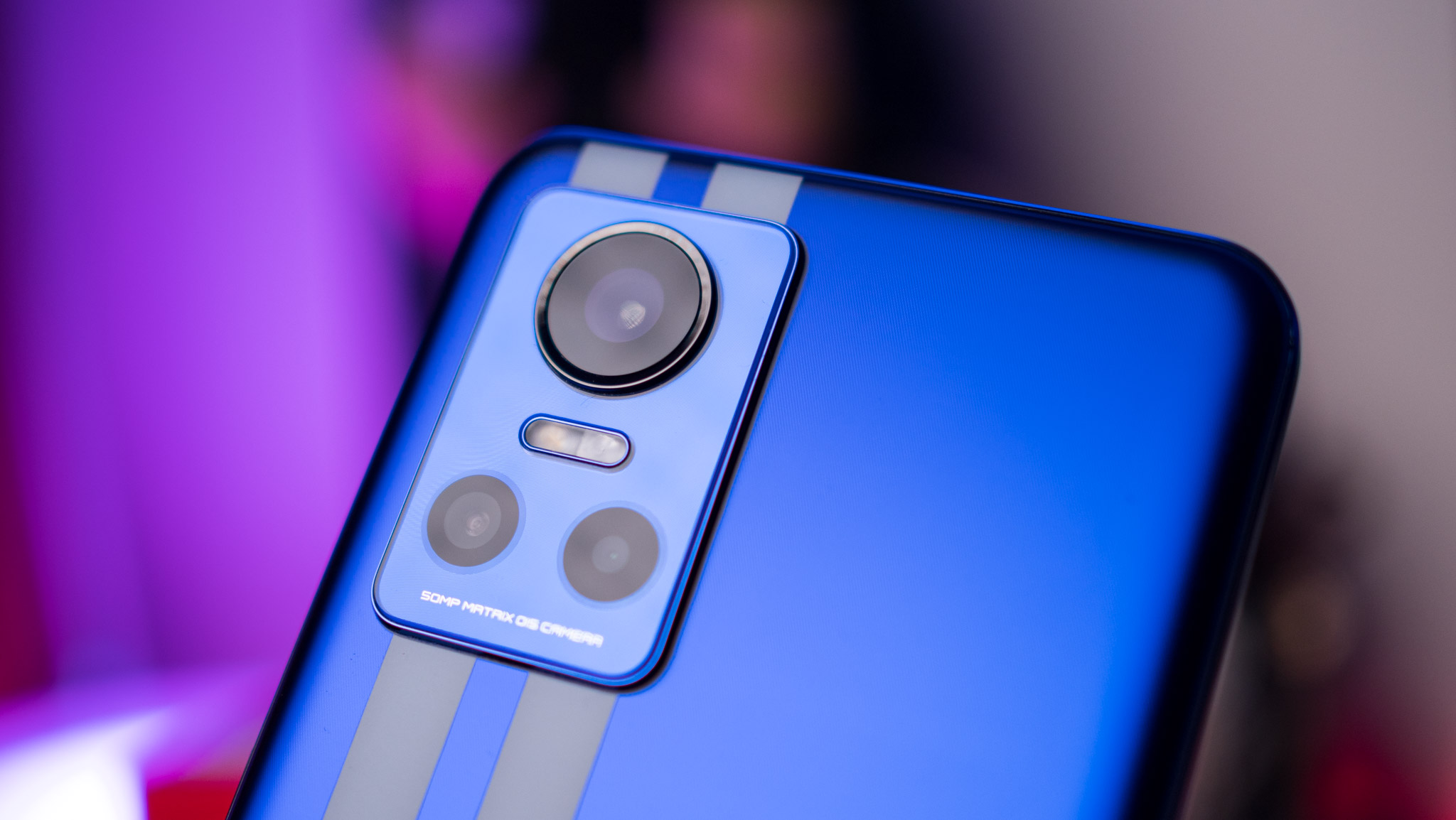
The GT Neo 3 comes with the same 50MP Sony IMX766 sensor that's a mainstay in a lot of high-end phones in 2022, including the likes of the GT 2 Pro, Find X5 Pro, and others. It's joined by an 8MP wide-angle lens, 2MP macro shooter, and a 16MP camera at the front of the device.
Realme hasn't made any changes to its camera interface, so you'll find all the toggles and settings in their usual position. The interface isn't cluttered and lets you access all the shooting modes with ease. The GT Neo 3 records videos at 4K 60 FPS, but only for the 50MP module — the rest of the cameras are limited to 1080p video. That feels like an oversight considering how much the phone costs, and this isn't the first time Realme has done so.





Photos have great dynamic range, accurate colors, and full of detail. That extends to low-light situations as well, with the Neo 3 able to deliver vibrant photos in challenging scenarios.
While the 50MP camera takes great photos, the same cannot be said of the wide-angle lens. The 8MP lens just doesn't cut it in this category, and it is a poor showing overall. Photos taken in daylight are decent enough, but you miss out on a lot of the detail, and it's clear that the software is aggressively smoothening the images.
For low-light shots, you get a lot of noise, washed out colors, and lack of detail. This is fixed somewhat by using the dedicated Night mode, but Realme should have used a higher-quality sensor here.
The same goes for the 16MP camera at the front; it just doesn't hold up to its rivals in this category. Colors aren't accurate, and it struggles to maintain detail in anything but stellar lighting conditions. Then there's the 2MP macro, which shouldn't have been included on a budget phone that costs half as much.
It's clear that Realme didn't focus too much in this area, with the brand instead turning to the phone's 150W charging tech and hardware prowess as a differentiator. While the 50MP camera takes great photos in any lighting situation, the auxiliary modules are lackluster. If you don't mind that, the GT Neo 3 is a good option to consider. If you want versatile cameras, you'll need to look elsewhere.
Realme GT Neo 3: Software
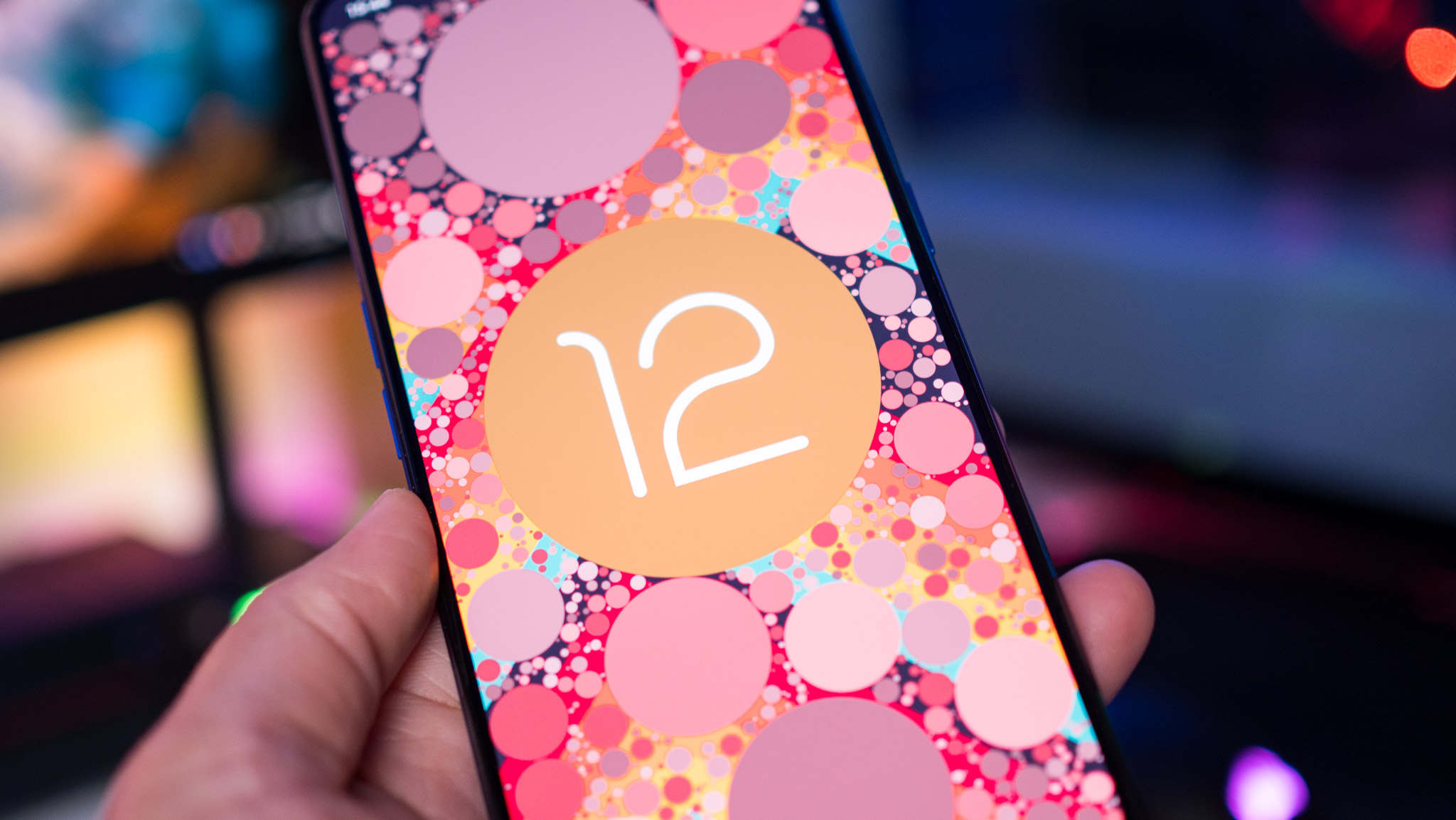
Realme made a lot of positive strides on the software front, and while its Realme UI 3.0 uses ColorOS 12 as the foundation, it has a few unique features. The GT Neo 3 runs Android 12 out of the box, and it will get two guaranteed platform updates.
That's less than what its immediate rivals in this category offer, with Samsung's mid-range Galaxy A53 now guaranteeing four Android OS updates and five years of security updates.
There is an inexcusable amount of bloatware on the GT Neo 3.
The bigger issue is the sheer amount of bloatware on the phone; most manufacturers have done a decent job in this area over the last two years, but the GT Neo 3 has a staggering amount of bloatware installed out of the box. Granted, you can uninstall most of these, but there are a few like Hot Apps and FinShell Pay that cannot be uninstalled or disabled.
As for day-to-day use, Realme UI 3.0 has a lot to offer, and it is nearly identical to ColorOS 12. So you get a polished UI with plenty of customizability, and all of Google's additions in Android 12 are available by default.
The bloatware situation is a definite low point for the device, and when you factor in the lackadaisical update guarantee, it's easy to see that the GT Neo 3 is lagging behind its rivals.
Realme GT Neo 3: The competition
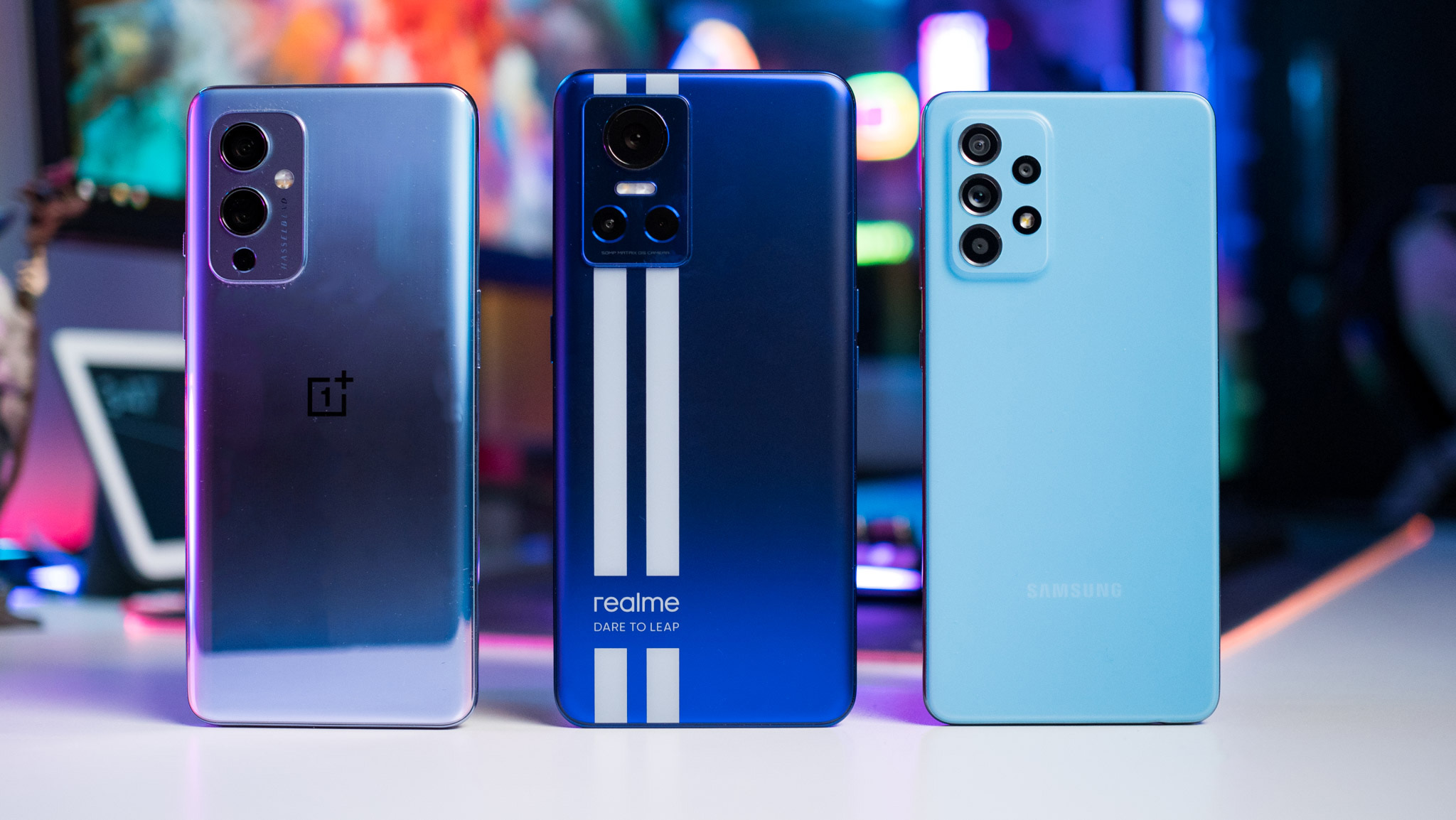
The mid-range segment is teeming with excellent options, and Samsung's Galaxy A53 continues to be a great overall choice. The device doesn't have the same caliber of hardware as the GT Neo 3, but it excels in day-to-day use, has the best user interface in this category, and will get double the number of Android updates as Realme's offering. You also get IP67 rating, the cameras take great photos, and the 5000mAh battery lasts over a day. It isn't ideal for gaming, but if you don't play a lot of games on your phone, it is the best mid-range phone currently available.
If you want a phone with high-end hardware, you should take a look at the OnePlus 9. The phone is now down to ₹37,999 ($490) for the model with 8GB of RAM and 128GB of storage, and that is an absolute steal for the features on offer. The OnePlus 9 has much better cameras at the back, has a gorgeous design that puts the GT Neo 3 to shame, and it has a 120Hz AMOLED panel, high-end internals, and 65W fast charging. It launched with Android 11 but will get three OS updates, so it will make the switch to Android 14 — just like the GT Neo 3.
And if you're okay with waiting for a few months, you should consider the Pixel 6a. Google's upcoming mid-ranger is powered by the same Tensor platform as the Pixel 6 and 6 Pro, and it should continue the same camera excellence as its predecessors. With a confirmed launch in India and the UK, I'm very interested in seeing what the Pixel 6a has to offer.
Realme GT Neo 3: Should you buy it?

You should buy this if:
- You want a phone that charges in under 20 minutes
- You're looking for a phone with a flashy design
- You need high-end internals built for gaming
- You want a 120Hz AMOLED screen
You shouldn't buy this if:
- You're looking for wireless charging or water resistance
- You need a device that doesn't have any bloatware
- You want long-term software updates
With the GT Neo 3, it feels like Realme made a few compromises to include the 150W charging tech. The software situation is horrendous for a phone in this category, and while you can get rid of most of the pre-installed bloatware, the fact that it will just get two Android OS updates makes it a non-starter for me.
There's no water resistance either, and you miss out on wireless charging. And while the design is flashy, it misses out on a durable mid-frame. That said, the phone holds up incredibly well for gaming thanks to the high-end hardware, and the 120Hz AMOLED panel is great in day-to-day use.
Of course, 150W fast charging is a big differentiator, but the novelty of that particular feature wears off after a few days. If you're interested in the Realme GT Neo 3, my recommendation would be to get the 80W model — you'll save some cash in doing so, and there isn't a huge gulf between charging times between 80W and 150W. And all things considered, the 80W model offers a better value.
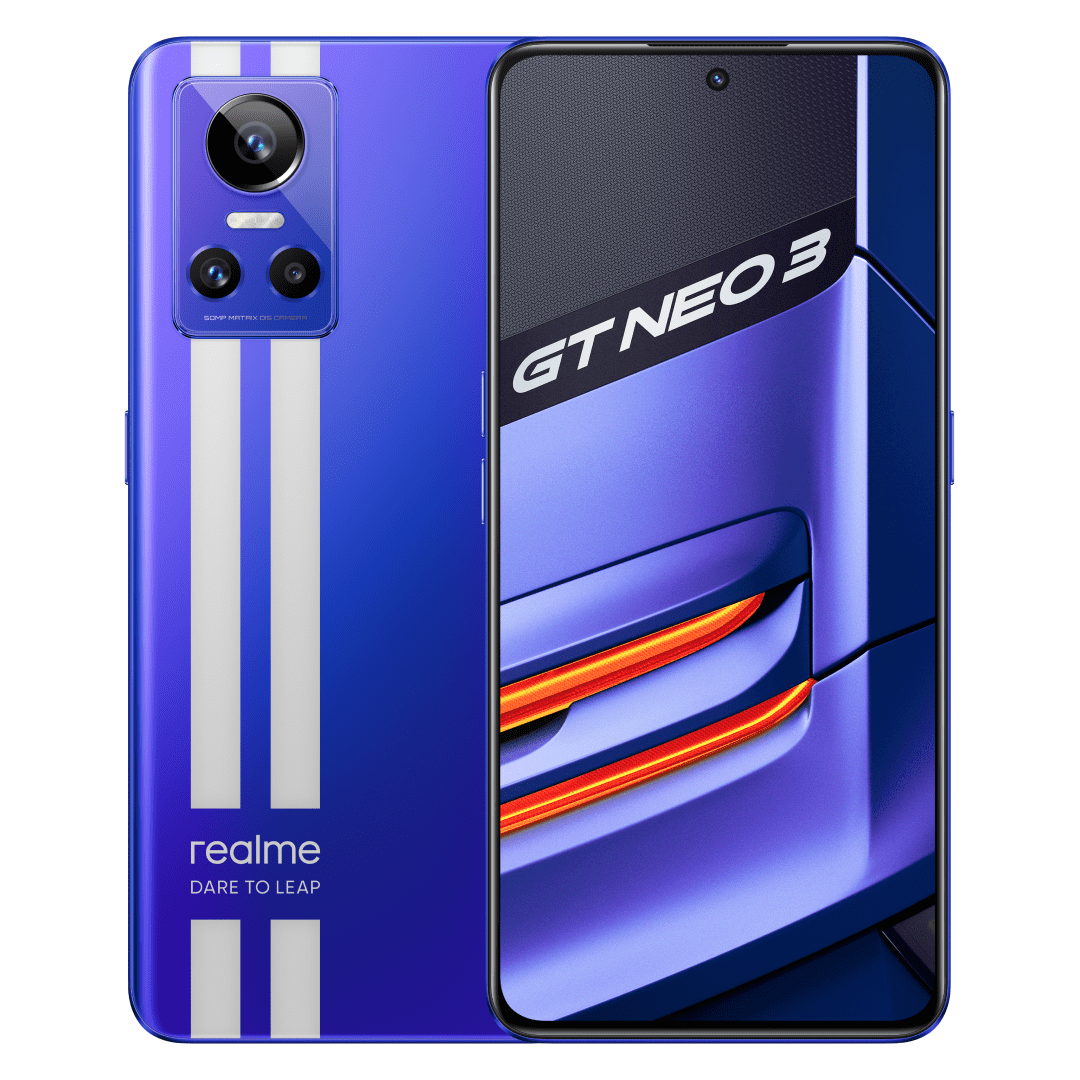
The GT Neo 3 combines a flashy design with powerful internals and ultra-fast 150W fast charging. However, the bloatware situation is out of hand, and you only get two platform updates. The auxiliary cameras aren't worth the hassle either, and add in the fact that there's no water resistance, and you're better off with one of the alternatives in this category.

Harish Jonnalagadda is Android Central's Senior Editor overseeing mobile coverage. In his current role, he leads the site's coverage of Chinese phone brands, networking products, and AV gear. He has been testing phones for over a decade, and has extensive experience in mobile hardware and the global semiconductor industry. Contact him on Twitter at @chunkynerd.
